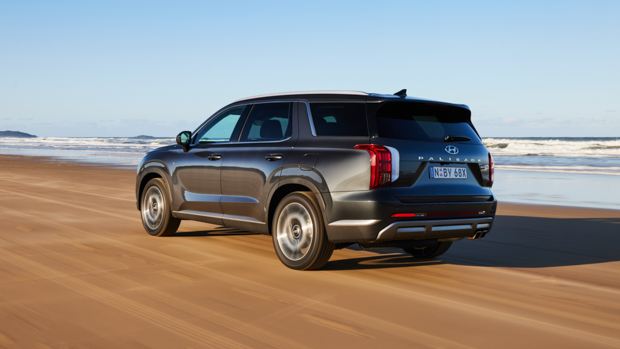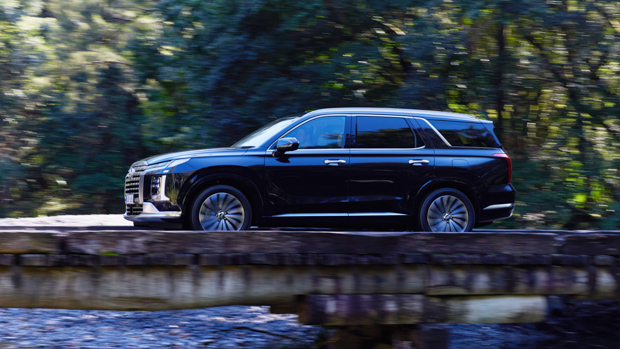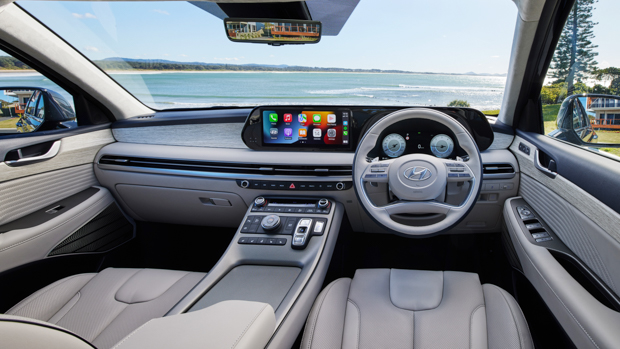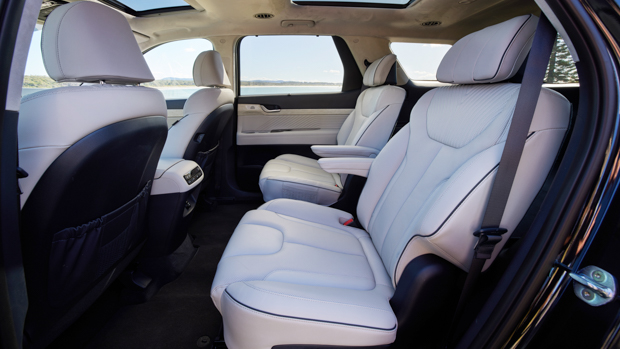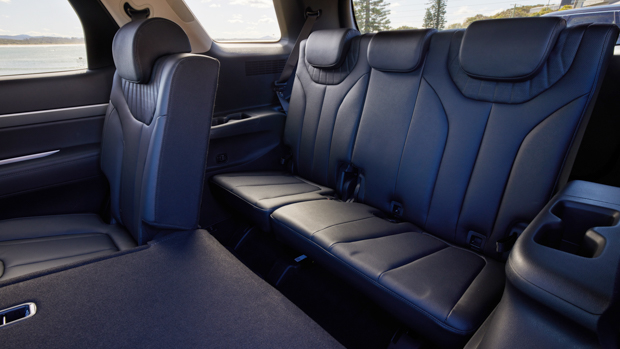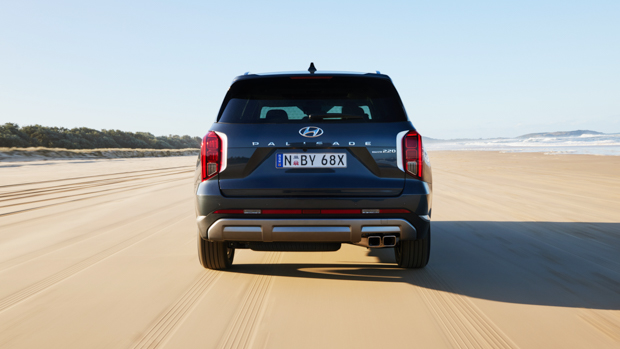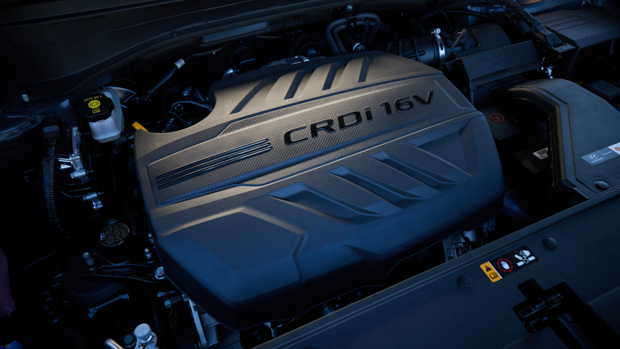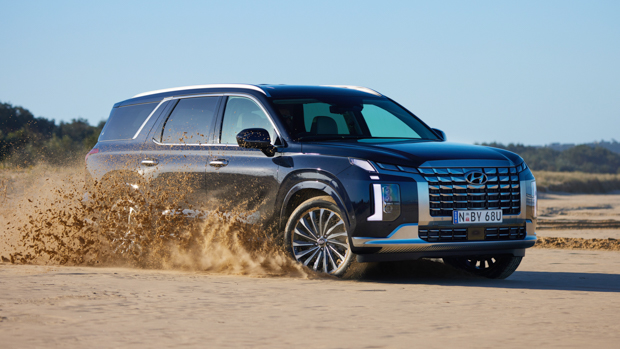-
Car Reviews
- All reviews
- Midsize SUVs
- Small cars
- Utes
- Small SUVs
- Large SUVs
- Large cars
- Sports SUVs
- Sports cars
- Vans
Latest reviews
- Car News
-
Car Comparisons
Latest comparisons
- Chasing Deals
Hyundai’s flagship Palisade SUV, which seats up to eight, is big on space and now even bigger on safety and interior tech
The facelifted Hyundai Palisade is set to arrive in Australia next month boasting significant updates to the interior technology and safety suite – but the upgrade has come at the cost of a higher price of entry.
After briefly introducing its upper large to the Australian market early last year, Hyundai has opted to ditch the grade model in the Palisade’s line-up, with the range now kicking off with the mid-spec Elite grade and topping out with the Highlander.
The remaining grades have seen a price increase of between $3700 to $5009, with the price of entry now kicking off at $65,900 before on-road costs – just over $10,000 higher than it was previously.
As before, the Palisade is available with both seven- and eight-seat options, however the latter option will no longer be considered unique in the large SUV segment with the arrival of the new-generation Nissan Pathfinder later this year.
The updated Palisade features a larger and bolder grille design flanked by new LED headlights with the daytime running lights moving down into the main beam for a single, continuous look.
Hyundai has trimmed the grille of the Palisade Elite in a more subdued black gloss colour while the Highlander receives a chrome finish with a matching front and rear skid plate-like design.
Both grades net redesigned 20-inch wheels and a more aggressive square exhaust pipe design along with new tail-lights that use LED lights.
Inside, the interior has seen the introduction of a larger 12.3-inch touchscreen with Apple CarPlay and Android Auto (which remain wired), working in conjunction with an additional full-width 12.3-inch digital driver’s display.
Hyundai has updated the cabin with incremental tech upgrades such as switching to faster-charging USB C outlets and adding a 15-watt wireless phone charger with a cooling fan in place of the old five-watt unit.
Other notable features on the Elite grade include a power tailgate, a 12-speaker Infinity audio system, heated auto-folding side mirrors, dual-zone climate control, LED lights inside the cabin, plus the ability to wind the windows up or down via the key fob.
The leather-appointed seats now feature a quilted pattern and more leather has been added to (or restyled) on common touchpoints around the cabin, such as on the centre armrest. The driver benefits from a 10-way power-adjustable seat and both front occupants receive a seat-heating function.
Opting for the top-spec Palisade Highlander nets a head-up display, Hyundai’s blind-spot view monitor in the digital driver’s display, a remote start function, a 360-degree camera and Nappa leather-appointed seats paired with a heated two-tone leather steering wheel.
In this higher grade, the driver also gains 12-way power adjustment with eight-way power adjustment for the front passenger. The first and second rows both gain seat heating and ventilation functions – including on the eight-seat version which was previously missed out on the cooling function in the middle row.
The Palisade is also the first model sold in Australia to be fitted with Hyundai’s Bluelink connectivity technology, which ushers in a whole host of features including the ability to send the car’s location to your phone, open or close the windows and access basic vehicle information like the fuel level remotely.
Family buyers will welcome the introduction of a raft of new safety features in the Palisade, including a front-centre airbag to prevent occupants from clashing in a side-on crash, bringing the total airbag count to seven.
Hyundai has also added a more advanced forward AEB system that is now capable of preventing a collision with an oncoming vehicle when turning across traffic.
Reversing AEB has also been added to the fray, though, Hyundai has chosen to exclude this feature from the Elite grade – a technology that is fitted as standard on rivals such as the Toyota Kluger.
Other safety features such as intelligent speed limit assistance, safe exit assistance and multi-collision braking have been added as standard – with the latter designed to prevent the Palisade from rolling into another accident after the initial collision.
Hyundai continues to offer the Palisade with a choice of two engine options with the 3.8-litre V6 petrol acting as the entry-level option.
Outputs of the V6 have remained the same at 217kW of power and 355Nm of torque, which is delivered to the front wheels only via an eight-speed automatic transmission.
Buyers can also opt for the 147kW/440Nm 2.2-litre turbo-diesel four-cylinder engine that uses the same eight-speed transmission but comes paired with all-wheel drive as standard.
While the diesel commands an additional $4000 over the petrol V6, it boasts significantly better fuel efficiency of 7.3L/100km compared to 10.7L/100km.
The updated Palisade will go on sale in August so stay tuned to our website and Youtube channel for a comprehensive and independent Chasing Cars review.
All prices listed are before on-road costs.
Latest news
About Chasing cars
Chasing Cars reviews are 100% independent.
Because we are powered by Budget Direct Insurance, we don’t receive advertising or sales revenue from car manufacturers.
We’re truly independent – giving you Australia’s best car reviews.
